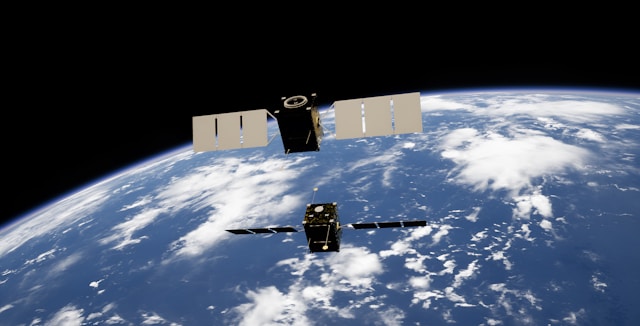The seamless streaming of live casino games to players across Alberta relies on a sophisticated global infrastructure that extends far beyond terrestrial internet connections. While most Canadians access the best online casinos Alberta through fiber optic cables and cellular networks, satellite technology plays a crucial behind-the-scenes role in ensuring uninterrupted connectivity, particularly in remote areas where traditional infrastructure is limited or unavailable. This convergence of space technology and entertainment represents one of the most fascinating intersections of modern telecommunications.
The Satellite Infrastructure Behind Online Gaming
Alberta’s vast geography presents unique connectivity challenges. While urban centers like Calgary and Edmonton enjoy robust fiber optic networks, rural and remote communities often depend on satellite internet to access online services, including live casino streaming. Modern communications satellites orbiting thousands of kilometers above Earth enable these connections, bridging the digital divide that would otherwise exclude significant portions of the province from participating in online entertainment. Geostationary satellites positioned approximately 35,786 kilometers above the equator maintain fixed positions relative to Earth’s surface, providing consistent coverage to specific geographic regions. These satellites receive signals from ground stations, amplify them, and retransmit them to users‘ satellite dishes, creating a relay system that enables internet connectivity where cables cannot reach.
Global Satellite Networks Enabling Connectivity
The European Space Agency’s contributions to satellite technology have been instrumental in advancing global communications infrastructure. As detailed in satellite data of the ESA, European satellite programs have pioneered technologies that improve signal quality, reduce latency, and increase bandwidth capacity—all critical factors for live streaming applications like casino games. Similarly, developments in navigation and communications from other space programs have global implications. The milestone described in China launches last BeiDou satellite represents the completion of a positioning system that enhances location-based services worldwide, including geolocation verification for online gaming platforms that must confirm users are within legal jurisdictions.
Low-Latency Requirements for Live Gaming
Live casino streaming presents particular technical challenges due to its interactive nature. Unlike passive video streaming where minor delays go unnoticed, live casino games require near-real-time interaction between players and dealers. Traditional geostationary satellites introduce latency of 500-700 milliseconds due to the vast distances signals must travel, which can create noticeable delays in gameplay. This latency challenge has driven innovation in satellite internet technology. Low Earth Orbit (LEO) satellite constellations, positioned between 500-2,000 kilometers above Earth, dramatically reduce signal travel time. According to Bipartisan Policy Center’s analysis of LEO satellites, these next-generation systems are transforming connectivity options for rural Canadians, including those in Alberta’s more remote regions.
Bandwidth and Data Transmission
Live casino streaming requires substantial bandwidt h to deliver high-definition video feeds of dealers, gaming tables, and real-time game outcomes. A single HD video stream can consume 3-5 Mbps, while multiple camera angles and interactive features push requirements even higher. Modern satellite systems must provide sufficient bandwidth not just for download speeds but also for upload capabilities that enable player interaction. Ka-band and Ku-band satellites offer higher frequencies and greater bandwidth capacity than older systems, making them better suited for data-intensive applications. These frequency bands allow satellite internet providers to offer packages with speeds comparable to traditional broadband connections, making live casino streaming feasible even in areas without cable or fiber infrastructure.
Hybrid Systems and Network Redundancy
Professional online casino operators rarely rely on a single connectivity method. Instead, they implement hybrid systems that combine multiple connection types to ensure reliability. A player in rural Alberta might primarily use terrestrial internet but have satellite backup connectivity that seamlessly takes over if the primary connection fails. This redundancy is essential for maintaining the continuous streams that live casino games require. On the backend, casino streaming studios often employ multiple satellite uplinks alongside fiber connections to broadcast their live feeds to global content delivery networks. This multi-path approach ensures that technical issues with any single connection don’t interrupt service to players.
Geolocation and Regulatory Compliance
Satellite technology also plays a role in regulatory compliance for online gaming. GPS and other satellite navigation systems help operators verify that players are physically located within jurisdictions where online gaming is legal. This geofencing technology must be precise and reliable, as operators face significant penalties for allowing access from prohibited locations. Alberta’s regulatory framework requires operators to confirm player locations before allowing real-money gaming. Satellite positioning data, combined with IP address analysis and other verification methods, creates a multi-layered approach to ensuring compliance with provincial gaming regulations.
The Future of Satellite Gaming Connectivity
Emerging satellite internet constellations promise to further improve online gaming experiences in Alberta’s remote areas. With latency approaching that of terrestrial connections and bandwidth sufficient for multiple simultaneous HD streams, the gap between urban and rural connectivity continues to narrow. These technological advances have broader implications beyond entertainment. Improved satellite connectivity supports telemedicine, remote education, and business operations in rural communities, with online gaming serving as one of many applications benefiting from space-based infrastructure.
From Orbit to Entertainment
The journey of data from space to screen represents a remarkable technological achievement. When an Alberta player places a bet on a live roulette table, their interaction may travel through satellite dishes, ground stations, undersea cables, and data centers spanning multiple continents before returning a result in milliseconds. This invisible infrastructure makes seamless entertainment possible regardless of a player’s location within the province. As satellite technology continues advancing and Alberta’s online gaming market matures, the synergy between space-based communications and digital entertainment will only deepen, ensuring that geographic location becomes increasingly irrelevant to accessing world-class gaming experiences.




